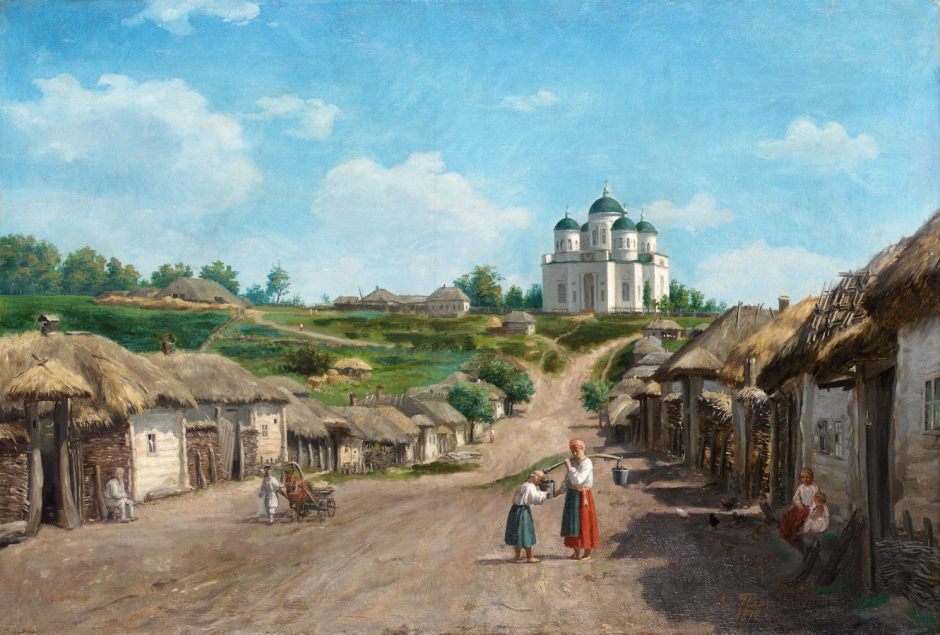So far, all the artists in this series were born and brought up in Ukraine. Today’s is an exception, as Khariton Platonov (1842–1907) was born in the Upper Volga region of Russia, but lived, worked and taught in Kyiv for the greater part of his career, over a period of thirty years. His importance to art in Ukraine is that he was a key figure in art education in Kyiv, and taught some of the most prominent Ukrainian painters of the early twentieth century.
Platonov was born in Russia, where he attended the Imperial Academy of Arts in Saint Petersburg between 1859 and 1870. He then taught at a school just outside Saint Petersburg.

Village Scene with Church from 1872 is now Platonov’s only accessible landscape painting, and could be almost anywhere in rural Russia or Ukraine on a fine summer’s day. Although painted after he had completed his training at the Imperial Academy, there are odd disparities in the relative sizes of figures and their depth in the view. In particular, the figure leading what appears to be a small pony and trap is tiny relative to other figures and the scale of the cottages.
Following that, his few accessible paintings are figurative, and show peasants happy despite their poverty, an approach common in Britain and elsewhere in Europe at the time, where comfortingly clean images of the poor were popular among the upper classes.

His Peasant Girl (Spilled Milk), from 1876, may have tousled hair, but she and her clothes are sparklingly clean and in a good state of repair.
In 1877, Platonov moved to Kyiv, where he started teaching at the recently formed Kyiv Drawing School, which had been founded two years previously by Mykola Murashko (1844-1909), a close friend of Ilya Repin, and uncle of Oleksandr Murashko.

Platonov’s Boy Shooting a Bow (1878) looks straight at the viewer, as he prepares to shoot his home-made crossbow. His clothes are a bit tattier, but he’s still squeaky clean.

The Little Baby-Sitter (1880) is perhaps a little closer to reality, with a young girl left alone to care for the infant in the swinging crib at the left. Her clothes are badly holed and frayed, but there’s no sign of dirt or squalor.

This Servant Girl from 1886 walks barefoot as she carries a young child and a basket of wild flowers.

His portrait of Oxana (1888) shows a young woman holding up a small wooden-framed mirror as she ties red and blue ribbons in her hair.

The last of these paintings of idyllic country life in Ukraine shows a Laundress (1889) talking to a toddler as she’s washing clothes in the river. The background is both sketchy and defocussed.
Platonov became increasingly involved with art education in Ukraine, and in 1901 was one of those who reorganised the Kyiv Drawing School to become the Kyiv Art School. Among his most prominent students were Mykola Pymonenko and Mykola Burachek, whose paintings I will show in future articles in this series. Platonov died in Kyiv in 1907.
References
Andrey Kurkov and others (2022) Treasures of Ukraine, A Nation’s Cultural Heritage, Thames & Hudson. ISBN 978 0 500 02603 8.
Konstantin Akinsha and others (2022) In the Eye of the Storm, Modernism in Ukraine 1900-1930s, Thames & Hudson. ISBN 978 0 500 29715 5.

